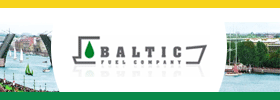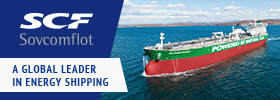With no ‘leader’ at home
According to an opinion expressed recently, construction of Leader class icebreakers is not supported by sufficient feasibility study being just a politically driven decision. The matter is what kinds of ‘Leaders’ are to be built and what are their tasks.
Matter of size
When speaking at RF Government meeting, RF Energy Minister Alexander Novak said that construction of three Leader class icebreakers is needed for the Arctic development. In his interview with RBC, USC President Aleksey Rakhmanov expressed doubts about economic efficiency of Leader class icebreakers.
“It cannot be excluded that some design solutions will prove to be insufficient or excessive, — said the head of USC. — These tests and scientific ideas which never stop developing can call the Leader necessary into doubt.”
What are the advantages of Leader class icebreakers over, let’s say, 60 MW nuclear-powered icebreakers (LK-60) which are under construction today? First of all, it is the icebreaking capability and the width of the canal. Icebreakers of LK-60 design cannot break through four-meter thick ice. Of course, there is practically no such ice on the routes. In practice, that means the following: Leader class icebreaker would be possible to ensure commercial speed of 10 knots in 2.5-meter thick ice, which is not possible for LK-60 icebreakers. If the resources allocated for construction of a powerful icebreaker of Leader class are spent for construction of two more LK-60 icebreakers the problem of commercial speed in 2.5-meter thick ice is not solved.
No less important is the fact that LK-60 icebreakers make a canal of 34-36 meters in width and cargo ships in the convoy should have a high ice class. Leader class icebreakers are supposed to make a 55-meter-wide canal allowing for escorting larger convoys with ships featuring a lower ice class. Their ability to lead large convoys of ships gives the name to this type of icebreakers.
On the other hand, construction of a Leader class icebreaker is not cheap. It is estimated at RUB 100 billion, 2.5 times as much as the cost of LK-60.
Designing of a 120 MW icebreaker has been mentioned but there are alternatives of lower capacity and cost.
For example, Krylov State research Center has proposed an alternative of a 60 MW icebreaker able to make a 62-meter wide canal. This ship will be suitable for most of equipment installed on LK-60 icebreakers. So, the components will not cost more as they will not be unique. Construction of such an icebreaker will cost RUB 50-55 billion which is about a half of cost estimated for a 120 MW icebreaker. However, this icebreaker will not ensure a commercial speed of 10 knots in 2.5-meter thick ice which is not achievable for LK-60 either.
Thus, it is quite possible that construction of three 120 MW icebreakers will be acknowledged to be too costly. Perhaps, different types of Leader class icebreakers will be built. The need for more powerful and wider icebreakers as compared with those of LK-60 design is beyond any doubt amid the plans to increase NSR traffic to 80 million tonnes per year.
Vitaly Chernov






